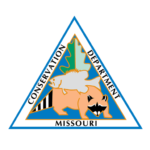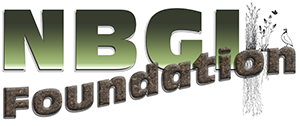I loaded up my 3-year old English pointer, Ranger, along with the necessary gear to sustain us for 2 days of quail hunting in north Missouri. As I pulled up to Shane’s house, a rancher friend of mine, he greeted me with shotgun in hand and a German shorthaired pointer by his side, raring and ready to go. After a brief conversation in the driveway we loaded the dogs and hopped into his truck and headed to our first hunting spot. Along the way Shane pointed out several farms he used to hunt, even describing specific locations they had flushed coveys. I asked him why he no longer hunted those properties, knowing perfectly well what his answer would be. Shane immediately replied, “No cover.”
As we continued to drive down the county road I couldn’t help but think about something a well-known quail researcher once said while trying to describe why quail populations have declined over the past 50 years. He said “Imagine driving across the state with a bird dog 50 years ago and stopping along the way at every location that looked like a good place to let the dog out and hunt. Now make that same drive today!” The point is that quail habitat used to be abundant and wide spread and today it is not; and the habitat that does exist is often in small patches and isolated from other areas of suitable habitat.
Loss of habitat is the primary cause for the quail population decline over the past 50 years, and it is the one factor we can actually control. It is true that quail die from many things, including predators, weather, disease and accidents, even in areas of good habitat. What many years of research has taught us, however, is that in areas of good habitat, and enough of it, quail can thrive, and in areas that lack habitat, quail don’t.
As we pulled into a cut cornfield, a long winding brushy draw lay before us. Several smaller draws entered the main draw from the surrounding uplands, all with adequate cover for quail, and maybe even an unsuspecting pheasant. Just a mere 100 yards from the truck Ranger locked up on a covey of 12 birds along the main draw. After harvesting a bird on the covey rise, we continued hunting until we came upon one of the smaller draws. We decided to take advantage of the wind, and hunt the smaller draw to the top of the ridge. On one side of the draw was the harvested corn field and on the other was a Conservation Reserve Program (CRP) buffer strip planted to native grasses and forbs (wildflowers). About 40 yards up the draw, in the buffer strip, I noticed a pheasant roost and shortly after that Ranger locked up on point again. I told Shane we have a pheasant on the run, and moments later my suspicion was confirmed when a rooster pheasant flushed just out of range.
As we stood at the end of the draw, in a bean field on the ridge, Shane and I discussed how good the cover was we had just hunted and how awesome it would be if more of it existed on the landscape. We proceeded to cut across the bean field to another draw and circle back to the truck. As we headed to our next location, again passing more properties holding fond quail hunting memories for my friend, we discussed how much habitat quail really need. “As much as possible and everywhere” I replied, clearly understanding there are limits in this day and age, given 21st century economics and the human demand for food and fiber. The good news is that with a little planning, providing adequate habitat for quail to survive is possible, even on today’s intensively managed landscapes. The desire to have the dogs locate another covey of quail and the opportunity to experience the exhilarating rush of one more covey flush is what keeps Shane and I, and all the other “dyed in the wool” quail hunters going from one fall to the next.
For more information regarding quail habitat and hunting opportunities in Missouri visit the Department’s quail hunting page.

Dave Hoover
Small Game Coordinator
Missouri Department of Conservation






